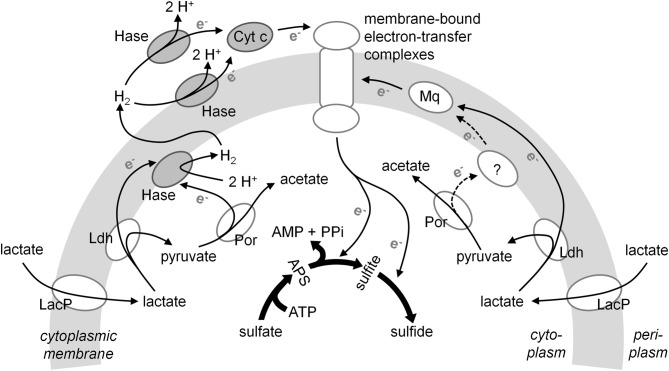Figure 1.
Schematic representation of two proposed pathways for electron transport during sulfate reduction in Desulfovibrio vulgaris Hildenborough (Modified after Keller and Wall, 2011). The hydrogen cycling model (Odom et al., 1981) describes the flow of reducing equivalents from the electron donor to oxidized sulfur species through hydrogen metabolism. This flow can be mediated by hydrogenases and other electron carriers, including cytochromes (Heidelberg et al., 2004). The second pathway can transfer electrons to the membrane-associated menaquinone pool (Keller and Wall, 2011). Dark gray ovals indicate enzymes and electron carriers deleted in the mutant strains used in this study. Abbreviations: LacP, lactate permease; Ldh, lactate dehydrogenase; Por, pyruvate-ferrodoxin oxidoreductase; Hase, hydrogenase; Cyt. c, cytochrome c; Mq, menaquinone pool; APS, adenosine 5′-phosphosulfate. Dashed lines and the question mark indicate currently hypothetical pathways and components.

